Mingxiang Cai
Generalized Category Discovery with Large Language Models in the Loop
Dec 18, 2023Abstract:Generalized Category Discovery (GCD) is a crucial task that aims to recognize both known and novel categories from a set of unlabeled data by utilizing a few labeled data with only known categories. Due to the lack of supervision and category information, current methods usually perform poorly on novel categories and struggle to reveal semantic meanings of the discovered clusters, which limits their applications in the real world. To mitigate above issues, we propose Loop, an end-to-end active-learning framework that introduces Large Language Models (LLMs) into the training loop, which can boost model performance and generate category names without relying on any human efforts. Specifically, we first propose Local Inconsistent Sampling (LIS) to select samples that have a higher probability of falling to wrong clusters, based on neighborhood prediction consistency and entropy of cluster assignment probabilities. Then we propose a Scalable Query strategy to allow LLMs to choose true neighbors of the selected samples from multiple candidate samples. Based on the feedback from LLMs, we perform Refined Neighborhood Contrastive Learning (RNCL) to pull samples and their neighbors closer to learn clustering-friendly representations. Finally, we select representative samples from clusters corresponding to novel categories to allow LLMs to generate category names for them. Extensive experiments on three benchmark datasets show that Loop outperforms SOTA models by a large margin and generates accurate category names for the discovered clusters. We will release our code and data after publication.
Towards Robust Visual Information Extraction in Real World: New Dataset and Novel Solution
Jan 24, 2021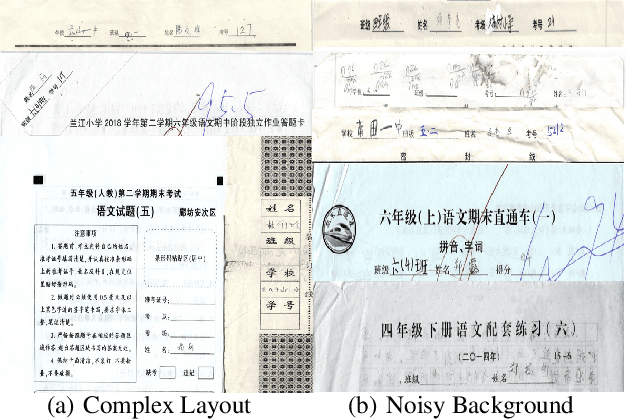

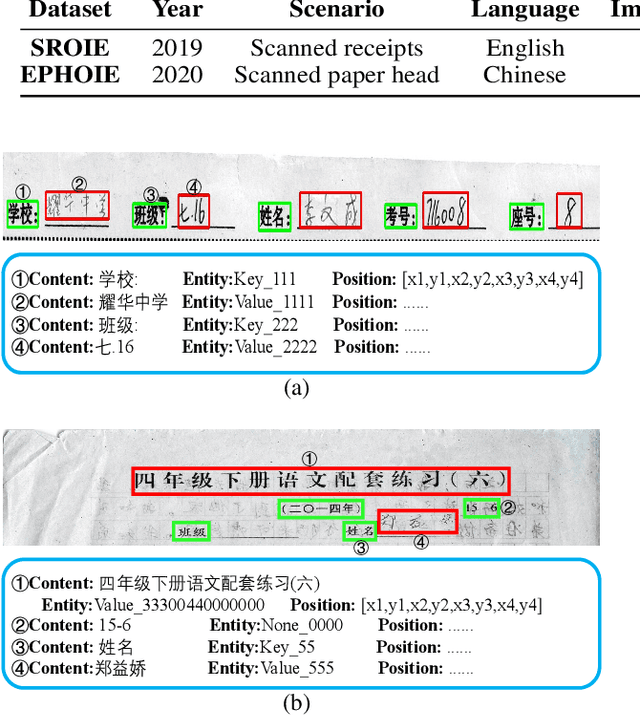

Abstract:Visual information extraction (VIE) has attracted considerable attention recently owing to its various advanced applications such as document understanding, automatic marking and intelligent education. Most existing works decoupled this problem into several independent sub-tasks of text spotting (text detection and recognition) and information extraction, which completely ignored the high correlation among them during optimization. In this paper, we propose a robust visual information extraction system (VIES) towards real-world scenarios, which is a unified end-to-end trainable framework for simultaneous text detection, recognition and information extraction by taking a single document image as input and outputting the structured information. Specifically, the information extraction branch collects abundant visual and semantic representations from text spotting for multimodal feature fusion and conversely, provides higher-level semantic clues to contribute to the optimization of text spotting. Moreover, regarding the shortage of public benchmarks, we construct a fully-annotated dataset called EPHOIE (https://github.com/HCIILAB/EPHOIE), which is the first Chinese benchmark for both text spotting and visual information extraction. EPHOIE consists of 1,494 images of examination paper head with complex layouts and background, including a total of 15,771 Chinese handwritten or printed text instances. Compared with the state-of-the-art methods, our VIES shows significant superior performance on the EPHOIE dataset and achieves a 9.01% F-score gain on the widely used SROIE dataset under the end-to-end scenario.
Finding teams that balance expert load and task coverage
Nov 03, 2020



Abstract:The rise of online labor markets (e.g., Freelancer, Guru and Upwork) has ignited a lot of research on team formation, where experts acquiring different skills form teams to complete tasks. The core idea in this line of work has been the strict requirement that the team of experts assigned to complete a given task should contain a superset of the skills required by the task. However, in many applications the required skills are often a wishlist of the entity that posts the task and not all of the skills are absolutely necessary. Thus, in our setting we relax the complete coverage requirement and we allow for tasks to be partially covered by the formed teams, assuming that the quality of task completion is proportional to the fraction of covered skills per task. At the same time, we assume that when multiple tasks need to be performed, the less the load of an expert the better the performance. We combine these two high-level objectives into one and define the BalancedTA problem. We also consider a generalization of this problem where each task consists of required and optional skills. In this setting, our objective is the same under the constraint that all required skills should be covered. From the technical point of view, we show that the BalancedTA problem (and its variant) is NP-hard and design efficient heuristics for solving it in practice. Using real datasets from three online market places, Freelancer, Guru and Upwork we demonstrate the efficiency of our methods and the practical utility of our framework.
Decoupled Attention Network for Text Recognition
Dec 21, 2019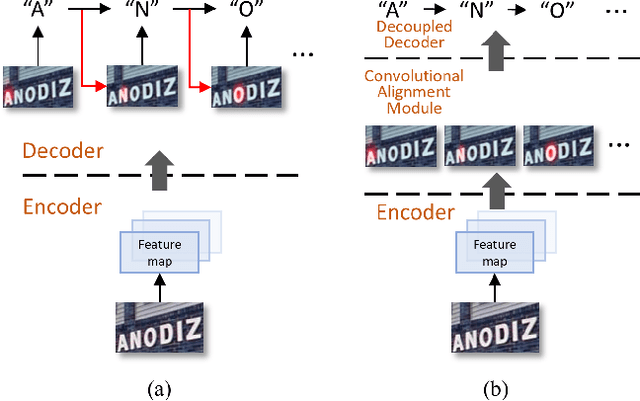
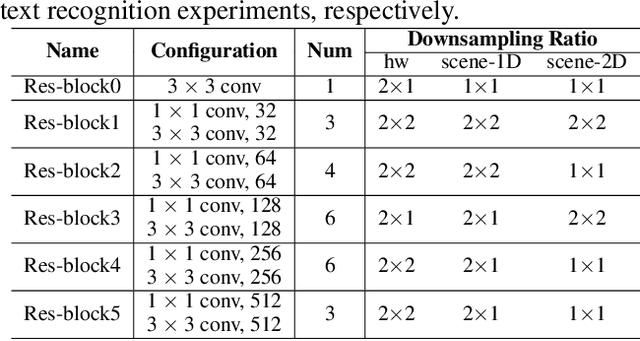
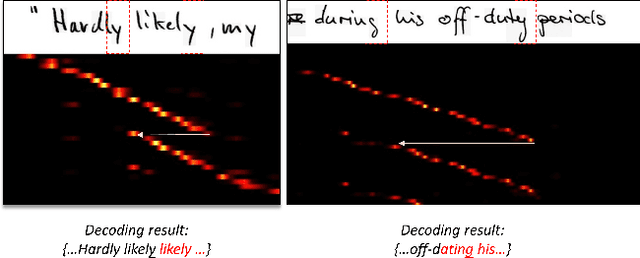
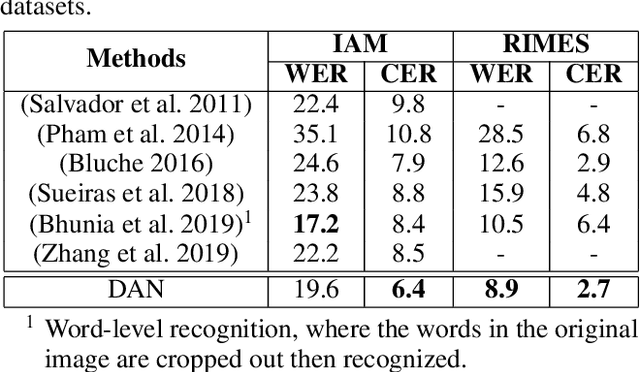
Abstract:Text recognition has attracted considerable research interests because of its various applications. The cutting-edge text recognition methods are based on attention mechanisms. However, most of attention methods usually suffer from serious alignment problem due to its recurrency alignment operation, where the alignment relies on historical decoding results. To remedy this issue, we propose a decoupled attention network (DAN), which decouples the alignment operation from using historical decoding results. DAN is an effective, flexible and robust end-to-end text recognizer, which consists of three components: 1) a feature encoder that extracts visual features from the input image; 2) a convolutional alignment module that performs the alignment operation based on visual features from the encoder; and 3) a decoupled text decoder that makes final prediction by jointly using the feature map and attention maps. Experimental results show that DAN achieves state-of-the-art performance on multiple text recognition tasks, including offline handwritten text recognition and regular/irregular scene text recognition.
 Add to Chrome
Add to Chrome Add to Firefox
Add to Firefox Add to Edge
Add to Edge